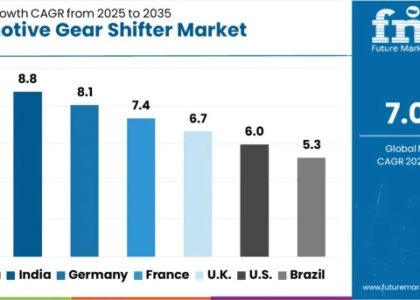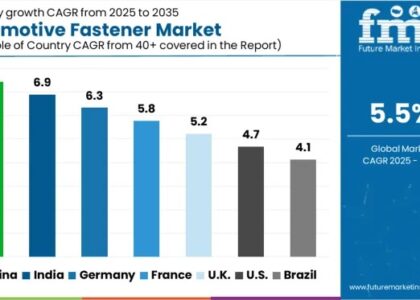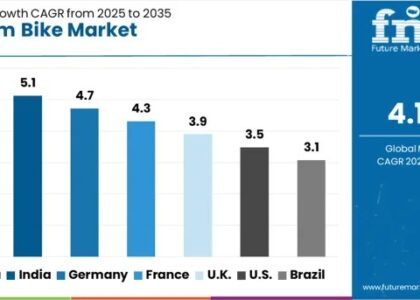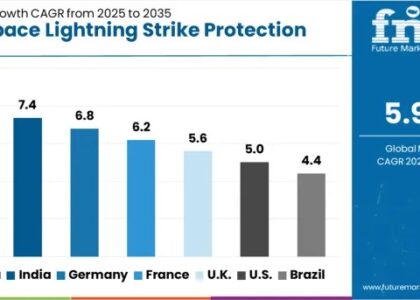As per Future Market Insights, Germany has a 30% share in the Europe low-alcohol beverage market. According to projections, from 2023 to 2033, German market for low-alcohol beverages will expand at a sluggish CAGR of 1.8%. In 2023.
Germany and Spain are likely to have a combined 79% of market share in the low-alcohol beverages in Europe. The consumption of low-alcohol beverages is steadily picking up the pace in Europe owing to the health risks associated with consuming alcohol. Consumers are increasingly choosing low-alcohol drinks, such as non-alcoholic beer and wine, or spirits with reduced alcohol content.
Europeans are becoming health conscious and want to eat and drink wholesome foods and drinks. Traditional alcoholic drinks, such as ordinary high-pressure beer, has led to a variety of health issues, such as anaemia, cancer, cardiovascular disease, depression, high blood pressure, and nerve damage.
Get Sample Copy@ https://www.futuremarketinsights.com/reports/sample/rep-gb-16521
Due to their health benefits, light alcoholic beverages are becoming increasingly popular among customers who previously preferred regular alcoholic beverages. As a result, drinking low-alcoholic beverages is being perceived as an effective strategy by people who want to permanently cut back on their alcohol use. All of these factors are projected to fuel market expansion in Europe from 2023 to 2033.
This has prompted key players in the industry to focus their efforts on developing healthy products with low-alcohol content. Companies are now investing in research & development to create palatable drinks that still provide a satisfying experience for consumers.
There is also a growing trend for non-alcoholic beer, wine, and spirits, as well as flavored alcoholic beverages with reduced levels of alcohol. Key companies such as Heineken, Constellation Brands, AB InBev, and Diageo are all investing in low-alcohol drinks to meet the escalating demand.
For instance, Heineken recently released its 0.0% non-alcoholic beer which has become increasingly popular in Europe. Constellation Brands launched a low-alcohol wine called The Dreaming Tree Crush, which has been lapped up by young adults.
AB InBev invested heavily in low-alcohol beverages including Budweiser Prohibition, a non-alcoholic beer. Diageo, the world’s leading distiller, released low-alcohol spirits including the Johnnie Walker Blue Label and the Ciroc Ultra-Premium Vodka.
Key Takeaways from the Low-alcohol Beverages Market
- The global low-alcohol beverages market is projected to expand at a steady 3% CAGR from 2023 to 2033.
- In 2023, the value of the global market is likely to reach US$ 1.41 billion.
- In 2033, the global market is projected to attain a valuation of US$ 2.36 billion.
- Rising inclination towards palatable drink for good health is poised to drive the demand for low-alcohol beverages in Europe.
“Key players in the Europe market are aggressively promoting their products by leveraging the power of social media. Celebrities are being roped in for campaigns as the continent’s population is being reminded of healthier alternatives to traditional alcoholic beverages.” – Says an FMI Analyst.
Talk to Our Analyst@ https://www.futuremarketinsights.com/ask-question/rep-gb-16521
Competition Landscape in the Low-alcohol Beverages Market
Key companies are exploring various marketing tactics to increase the market share for non-alcoholic drinks. To differentiate themselves from competitors, companies are doubling down on their branding efforts.
AB InBev, Heaven’s Door, and Asahi Europe & International are key companies in Europe low-alcohol beverages market.
Recent Developments:
- In June 2022, leading brewing corporation in the world, AB InBev, announced the launch of Corona Cero, a novel low-alcoholic beer created with 100% natural ingredients, across ten European regions.
- In February 2020, in order to further its worldwide reach, Bob Dylan and Spirits Investment Partners entered the United Kingdom and Germany with their line of American whiskies called Heaven’s Door.
Use promo code ->> FMITODAY to get flat 20% discount@ https://www.futuremarketinsights.com/checkout/16521
Low-alcohol Beverages Market Segmentation by Category
By Type:
- Low-Alcohol Beer
- Low-Alcohol Spirits
- Low-Alcohol Wine
- Low-Alcohol RTD
- Low-Alcohol Ciders
By Distribution Channel:
- Hypermarkets/Supermarkets
- Convenience Stores
- Specialty Stores
- Online Retail
About FMI
Future Market Insights (ESOMAR certified market research organization and a member of Greater New York Chamber of Commerce) provides in-depth insights into governing factors elevating the demand in the market. It discloses opportunities that will favor the market growth in various segments on the basis of Source, Application, Sales Channel and End Use over the next 10-years.
Contact Us:
Unit No: 1602-006
Jumeirah Bay 2
Plot No: JLT-PH2-X2A
Jumeirah Lakes Towers, Dubai
United Arab Emirates
For Sales Enquiries: sales@futuremarketinsights.com
Browse Other Reports: https://www.futuremarketinsights.com/reports





